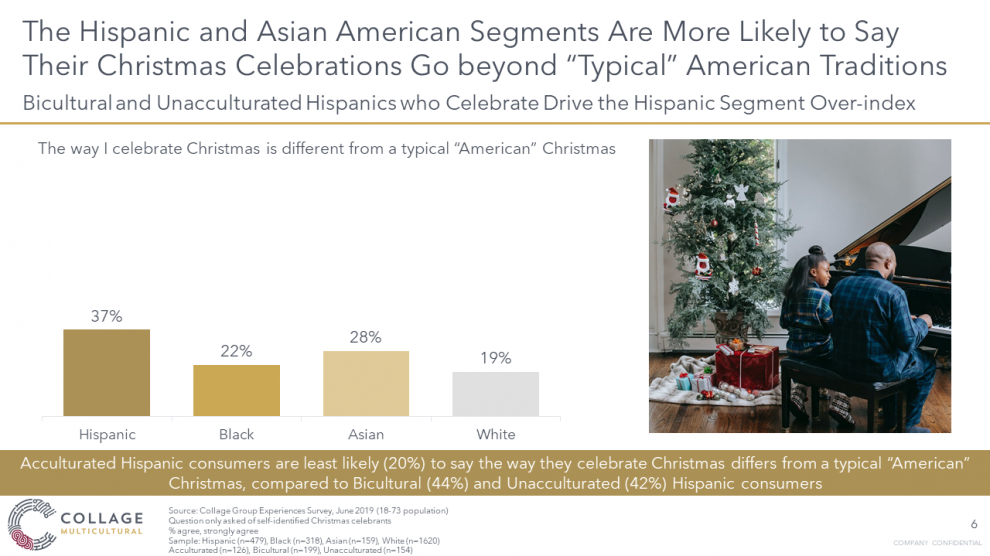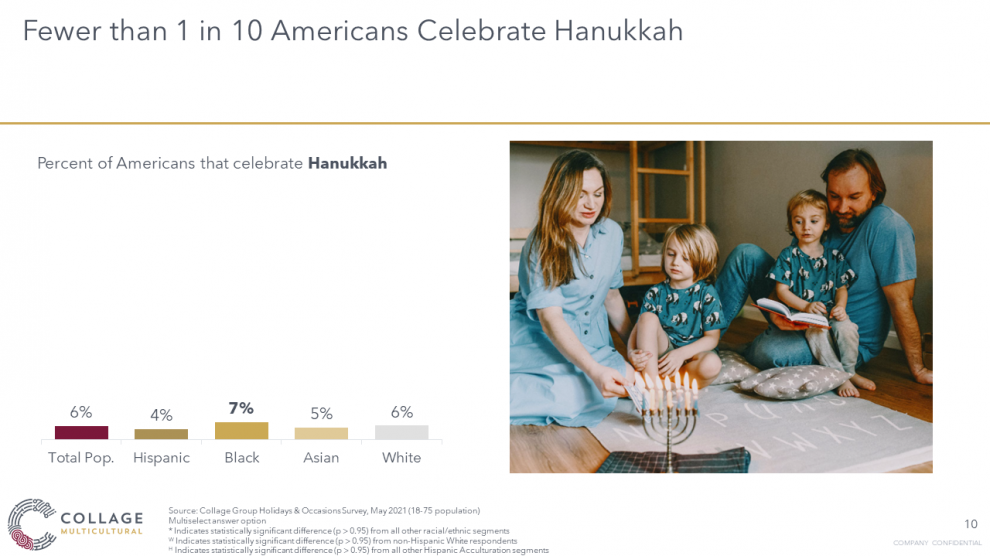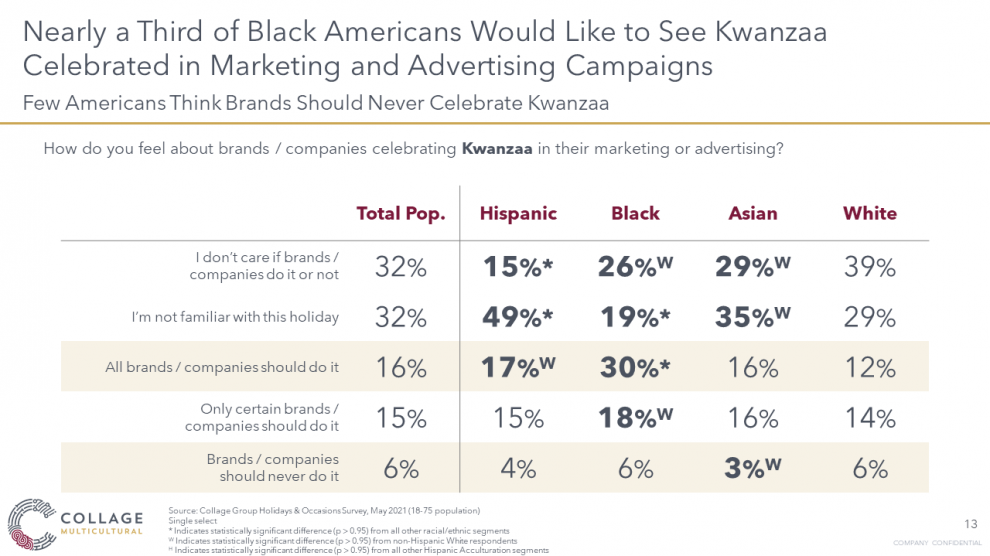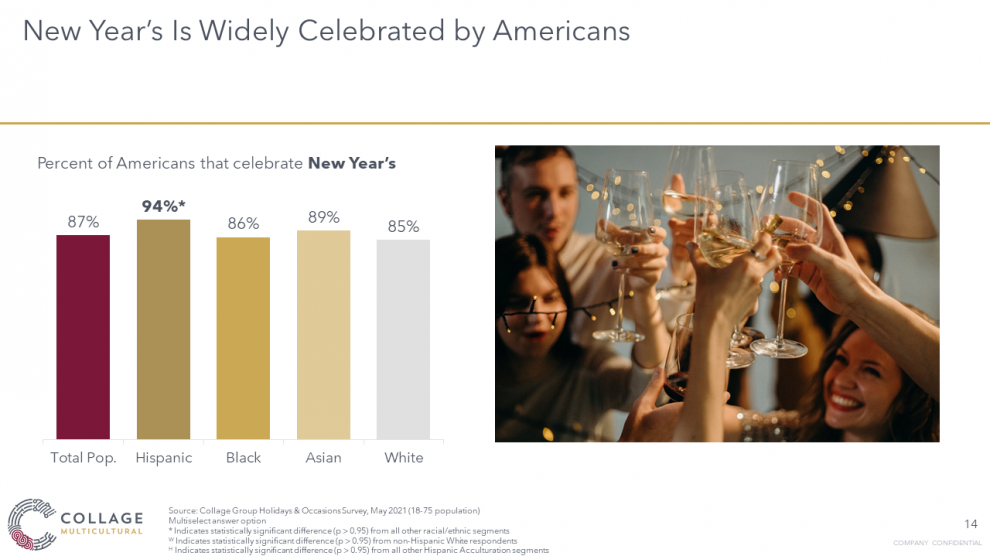Holidays and Occasions: Christmas, Hanukkah, Kwanzaa, and New Year’s

Learn how American consumers across racial and ethnic segments prepare for and celebrate the winter holidays of Christmas, Hanukkah, Kwanzaa, and New Year’s.
The beginning of winter brings a multitude of holidays for Americans to celebrate. While revelers will still have to cope with COVID-19 protocols during the 2021 festivities, vaccines and experience may better equip Americans to celebrate more openly this year than last. With an eye toward shifts in consumer behavior we bring you our updated findings from the 2021 Holidays & Occasions study to help your brand understand consumers’ changing expectations and how they plan to celebrate during this holiday season.
Christmas is one of the most beloved and widely celebrated holidays in America. Over three-quarters of each racial and ethnic segment celebrate it, with its highest popularity among Hispanic and Non-Hispanic White Americans. Consumers from many backgrounds celebrate the holiday by enjoying seasonal food, listening to Christmas music, and putting up festive decorations.
However, multicultural consumers say that their Christmas celebrations often differ from typical depictions. Cultural nuance at Christmas is key information for brands producing traditional Christmas marketing content as it may land as unrelatable to some Americans consumers. often Over a quarter of Hispanic and Asian consumers agreed that their versions of Christmas celebrations split from a standard “American Christmas.” This is often the case because of the inclusion of cultural celebrations.

Hispanics often celebrate Christmas through several holidays such as Noche Buena (Christmas Eve), Three Kings Day (January 6th), Las Posadas (the 9 nights leading up to Christmas), and Tamaladas (a Christmastime tamale-making party). Highlighting these holidays activities during the winter months is a great way to connect with Hispanic consumers.
Hanukkah is the Jewish eight-day holiday observed on the 25th day of Kislev (typically in December). Also known as the festival of lights, this holiday is celebrated with a nightly menorah lighting, special prayers, and fried foods. Though fewer than one in ten Americans celebrate the holiday, over a third of all consumers actively welcome brands to celebrate it through advertising and marketing efforts.

American retailer Target was able to successfully do this in their most recent holiday ad campaign “The Holidays Are Meant To Be Shared” which features a family celebrating Hanukkah by lighting the menorah, among several other different holiday activities.

Kwanzaa, a seven-night holiday observed from Dec. 26 to Jan. 1, is a holiday to honor African American and Pan-African culture and traditions and celebrates African American unity. Though not widely popular with the total population, the holiday holds great importance for many Black Americans. According to our study, 18% of Black Americans celebrate Kwanzaa. This is also a holiday for brands to consider celebrating. About 30% of Black consumers agreed that all brands should celebrate Kwanzaa in their advertising. This provides the opportunity for brands to highlight Kwanzaa and its traditions to educate Americans unfamiliar with the holiday and connect with Black consumers.

Finally, New Year’s also provides brands an opportunity to be the life of the party. New Year’s is celebrated by most Americans across all ethnic groups, though Hispanics are particularly likely to enjoy the festivities. Although sparkling wine is typically a toasting drink to usher in the new year, other alcoholic beverages play a prominent role in the celebration. Hispanic consumers are most likely to drink beer and hard cider during their celebrations, while Black consumers are most likely to drink liquor/spirits.
Get In Touch
Harness the power of cultural intelligence to win diverse America. Discover how you can turn insights into impact today! Contact us.